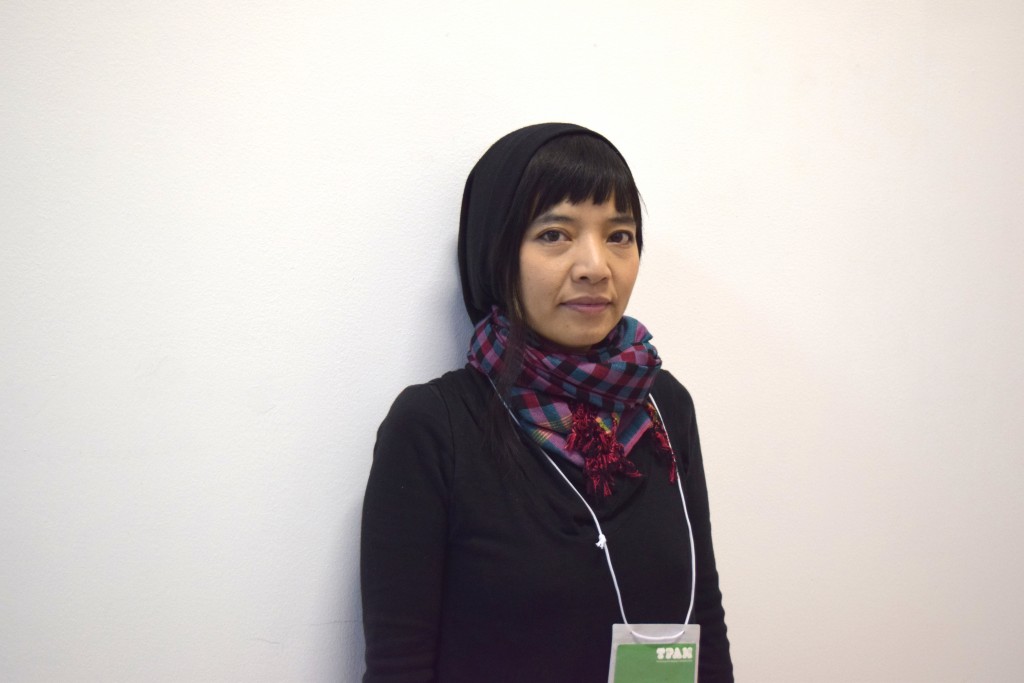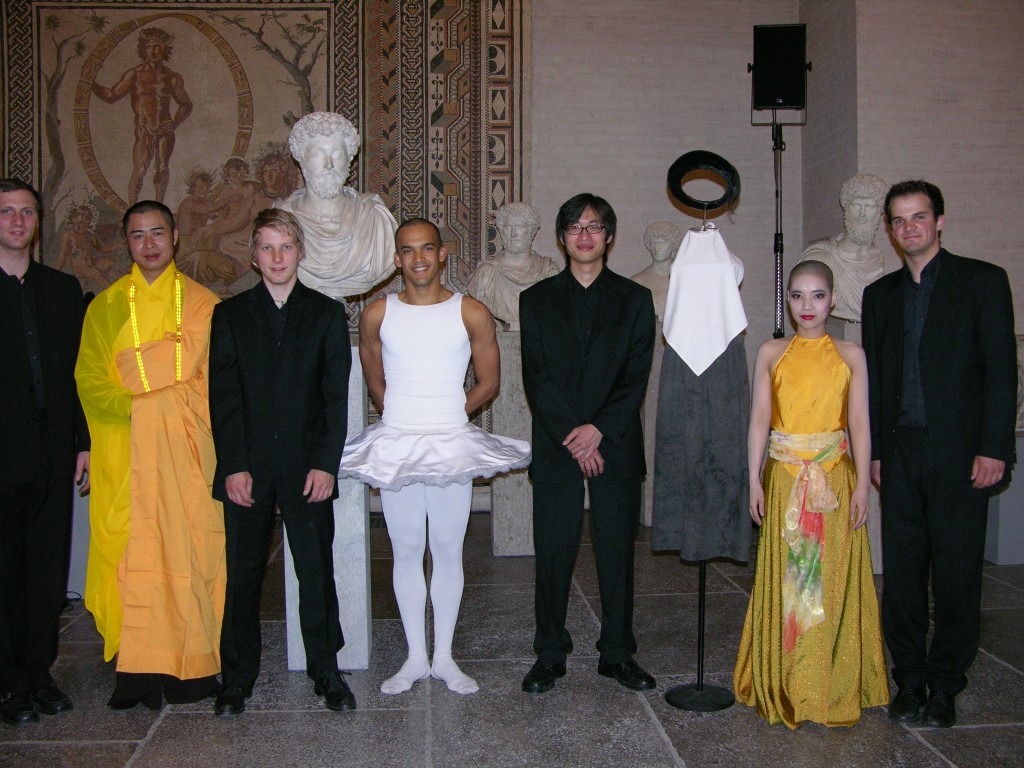Vietnamese composer, Ms. Tran Kim Ngoc
Hello everybody.
Today I would like to introduce my work as a music composer and mixed media artist. After that I will show the promotional video for Hanoi New Music Festival, for which I am the founder and artistic director.

I started out as a composer and graduated with a degree in composition from the Hanoi National Academy of Music in Vietnam. I studied the classical way of composing music and writing scores for symphony orchestras and instrumental pieces. In 2000, when I was 20 years old, I started to compose music-theatre but at that moment I didn’t know that it was called music-theatre.
The name of this piece is Vagabonds’ Dream. I took inspiration from Antoine de Saint-Exupéry’s novel The Little Prince and made my own version for the Vietnamese. It is about censorship, the individual and film expression in Vietnam. It was my first music-theatre piece. It was at a time when I decided not to use the traditional way of writing music or writing a score. Instead, I decided to work directly with the musicians and explore more experimental possibilities for my art language. It was a very nice experience for myself – it was my first piece of music-theater.
Vagabonds’ Dream
There was no score for this piece and so we had a three-month rehearsal period. During the three years that I spent studying composition and improvisation in Germany, I came across a very rich scene for music-theater. That was when I knew that Vagabonds’ Dream was my first music-theater piece. At the time that I composed it I didn’t know that it was music-theater. After that I followed up to discover more about music-theater language and create my own version or definition of music-theater and mixed media.
Presenting a piece based on the five states of absence
I have been involving a lot of different art forms in my pieces. For example, in 2006 I was commissioned by the Munich Biennale to compose a music-theater piece to be performed in a museum. The Glyptothek Museum is actually a very large sculpture museum for Ancient Roman Art. I decided to use the last three rooms when composing this piece. It was a site-specific music-theater. It could only have been performed at the Glyptothek Museum.
I had walked inside the selected rooms and thought about the “absence” – those things that no longer existed in the rooms. By being at the museum, you were just watching dead version of entities that were once alive. They are just remaining images and maybe a spirit of timeliness that I came to me through the silent marble sculptures. I decided to call this piece Absence!
I had worked with site-specific elements, for example in this room of the museum I worked with the echo elements and the footsteps of the audience as they walked in. In this piece, there is five different characters and they represent the five different states of the absence.
Absence
The first character was Southern Wind. For Vietnamese person like myself, the monsoon that comes from the south is a symbol of the Southeast Asia climate and the cultural climate. That was absent for me when I was studying in Germany.
The second character was Tradition. I played this character myself and improvised the vocals by taking a traditional melody and then developing it using real-time processing through a laptop. I also designed a special outfit for this female character. She wore the traditional costume worn by Vietnamese women, but she had a bald head, which is something very provocative and controversial…
The third character was Witness, which was played by a sound tape. I recorded the sounds from the street and daily life in Vietnam and then I developed it further on the computer. I used editing (cutting/collage/paste) and other simple effects to distort and break the sound; to rearrange the entire musical structure of the recording, I reconstructed my own memories of my homeland. A “witness” is itself a real recording of real life. Thus an “absence” is what is no longer there. However, it has been digested through my mind and became an illusion of my memories – an absolute “absence”.
The fourth character was Male Swan, who is inspired by the swan character from the ballet Swan Lake by Tchaikovsky. This is a symbol of classical music culture, but in my piece a male dancer played the swan. I worked with him to choreograph the movements expressing an “absence” of classical culture in modern times.
The last character was Monk. I invited a Buddhist monk from Vietnam to do meditation in one room of the typical Roman style museum. I just asked him to present in the room and do whatever he wanted to do: meditation, chanting, blessing… “The Absence” is a core concept in Buddhism, especially in meditation. That’s why I brought this concept – as a character – into my piece by asking a real Monk to be present and experience “absence” in an unusual venue.
Incorporating the sounds of the audience and the space into a performance
The five characters were set up in different positions within the three rooms. I created a script that guided the audience from the first room to the last room in order to explore my piece. So the audience’s footsteps and sounds were involved and included in the piece. I used it as an element of my musical composition.
It is the kind of piece where the audience must be present in the room to perceive the piece. I have been guiding the audience in a certain way by the progress and the music of the piece. It is not random; their positions were all planned. Sometimes that happened in a certain way that was not planned, they didn’t follow my plan 100%. The basic things almost always follow my plan.
When the music happened in one room, the audience would all go there. The monk didn’t know but I had a microphone near him and so when he did the chanting, the audience followed. However, most of the time he would just sit there and breathe.
His meditative state and peaceful surroundings attracted some members of the audience, some times much more so than the loud music in the next room. They followed the music, followed the monk, followed the sounds, followed the male Swan, followed the traditional costume when those characters moved and acted… and so on.

At one stage I had all three rooms with very loud music and sound. It was an interesting moment because the audience was confused and didn’t know what to do or where to go. They had to decide for themselves. That was a very important moment for me as an observer of the piece. Besides being performer I am an observer. I like interacting with the real happenings in the room.






